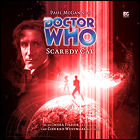 Big Finish Productions releases the 75th Doctor Who audio drama in its main monthly range, starring Paul McGann and India Fisher.
Big Finish Productions releases the 75th Doctor Who audio drama in its main monthly range, starring Paul McGann and India Fisher. ![]()

Earl Green is the creator, curator, and head writer of theLogBook.com.
 Big Finish Productions releases the 75th Doctor Who audio drama in its main monthly range, starring Paul McGann and India Fisher.
Big Finish Productions releases the 75th Doctor Who audio drama in its main monthly range, starring Paul McGann and India Fisher. ![]()
 Meco Monardo releases the instrumental cover album Star Wars Party (which will be reissued under various other titles in the years to come).
Meco Monardo releases the instrumental cover album Star Wars Party (which will be reissued under various other titles in the years to come). ![]()
 Television writer and producer Michael Piller, credited by many for the success of the revived Star Trek franchise (and co-creator of spinoff series Star Trek: Deep Space Nine and Star Trek: Voyager) dies at the age of 57 after a prolonged battle with cancer. Piller, who had previously been a producer on Simon & Simon and the SF series Probe, joined Star Trek: The Next Generation as the head of the writing staff for the third season in 1990, replacing Maurice Hurley. Piller was generally credited with bringing a more friendly vibe to the show’s writing sessions and with finding new talent, such as fan writer Ronald D. Moore. Piller also wrote the popular two-part episode The Best Of Both Worlds and many others, and went on to create Deep Space Nine with Rick Berman and Voyager with Berman and fellow Next Generation veteran Jeri Taylor. Piller created the short-lived series Legend for UPN, starring Richard Dean Anderson (pre-SG-1) and John de Lancie, and later formed a production company with his son Shawn, where he developed the recent version of The Dead Zone for TV, as well as ABC Family Channel’s Wildfire, starring DS9 alumnus Nana Visitor.
Television writer and producer Michael Piller, credited by many for the success of the revived Star Trek franchise (and co-creator of spinoff series Star Trek: Deep Space Nine and Star Trek: Voyager) dies at the age of 57 after a prolonged battle with cancer. Piller, who had previously been a producer on Simon & Simon and the SF series Probe, joined Star Trek: The Next Generation as the head of the writing staff for the third season in 1990, replacing Maurice Hurley. Piller was generally credited with bringing a more friendly vibe to the show’s writing sessions and with finding new talent, such as fan writer Ronald D. Moore. Piller also wrote the popular two-part episode The Best Of Both Worlds and many others, and went on to create Deep Space Nine with Rick Berman and Voyager with Berman and fellow Next Generation veteran Jeri Taylor. Piller created the short-lived series Legend for UPN, starring Richard Dean Anderson (pre-SG-1) and John de Lancie, and later formed a production company with his son Shawn, where he developed the recent version of The Dead Zone for TV, as well as ABC Family Channel’s Wildfire, starring DS9 alumnus Nana Visitor.
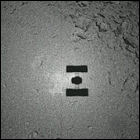 The first attempt to maneuver the unmanned space probe Hayabusa close enough to scoop up a sample of material from the surface of asteroid 25143 Itokawa is aborted by ground controllers at the Japanese space agency, JAXA. The spacecraft’s navigational system finds it difficult to maintain a precise lock on the elongated asteroid, so its automatic safety systems abort the approach to preserve Hayabusa intact. Another attempt to bring Hayabusa close enough to gather material from Itokawa’s surface will be made a week later.
The first attempt to maneuver the unmanned space probe Hayabusa close enough to scoop up a sample of material from the surface of asteroid 25143 Itokawa is aborted by ground controllers at the Japanese space agency, JAXA. The spacecraft’s navigational system finds it difficult to maintain a precise lock on the elongated asteroid, so its automatic safety systems abort the approach to preserve Hayabusa intact. Another attempt to bring Hayabusa close enough to gather material from Itokawa’s surface will be made a week later.
 Greg Edmonson’s soundtrack to the series Firefly is released on Varese Sarabande Records.
Greg Edmonson’s soundtrack to the series Firefly is released on Varese Sarabande Records. ![]()
 ABC airs the 30th episode of the J.J. Abrams-produced series Lost. Malcolm David Kelley guest stars as Walt.
ABC airs the 30th episode of the J.J. Abrams-produced series Lost. Malcolm David Kelley guest stars as Walt. ![]()
 ABC premieres the seventh episode of Shaun Cassidy’s sci-fi/horror series Invasion, starring William Fichtner (Contact), Eddie Cibrian, and Lisa Sheridan.
ABC premieres the seventh episode of Shaun Cassidy’s sci-fi/horror series Invasion, starring William Fichtner (Contact), Eddie Cibrian, and Lisa Sheridan. ![]()
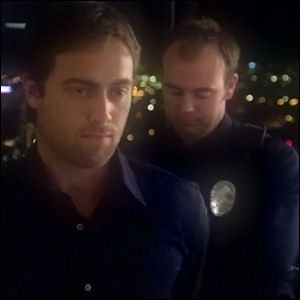 ABC airs the sixth episode of Frank Spotnitz’ sci-fi/horror series Night Stalker, a re-imagining of the 1970s series Kolchak: The Night Stalker, starring Stuart Townsend (The League of Extraordinary Gentlemen). ABC cancels the series after this episode, leaving four episodes unaired (which will later appear on Sci-Fi Channel and on the DVD release); this also means that the series ends with part one of what was intended to be a two-part story.
ABC airs the sixth episode of Frank Spotnitz’ sci-fi/horror series Night Stalker, a re-imagining of the 1970s series Kolchak: The Night Stalker, starring Stuart Townsend (The League of Extraordinary Gentlemen). ABC cancels the series after this episode, leaving four episodes unaired (which will later appear on Sci-Fi Channel and on the DVD release); this also means that the series ends with part one of what was intended to be a two-part story. ![]()
 East Side Digital releases the Rediscovering Lost Scores soundtrack compilations, featuring Wendy Carlos’ music from The Shining, Tron, Woundings and more.
East Side Digital releases the Rediscovering Lost Scores soundtrack compilations, featuring Wendy Carlos’ music from The Shining, Tron, Woundings and more. ![]()
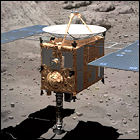 A second attempt is made by the Japanese Aerospace Exploration Agency to bring its unmanned space probe, Hayabusa, close enough to gather a sample of surface material from asteroid 25143 Itokawa. It attempts to deploy a mini-rover called Minerva to explore Itokawa from the surface, but a glitch results in a trajectory that leaves Minerva tumbling into space, never to reach Itokawa. Hayabusa lands on Itokawa’s surface itself, though mission controllers don’t realize this for several more days. Contact is lost with Hayabusa for a short while, and when it is regained, the vehicle has left the surface and gone into safe mode.
A second attempt is made by the Japanese Aerospace Exploration Agency to bring its unmanned space probe, Hayabusa, close enough to gather a sample of surface material from asteroid 25143 Itokawa. It attempts to deploy a mini-rover called Minerva to explore Itokawa from the surface, but a glitch results in a trajectory that leaves Minerva tumbling into space, never to reach Itokawa. Hayabusa lands on Itokawa’s surface itself, though mission controllers don’t realize this for several more days. Contact is lost with Hayabusa for a short while, and when it is regained, the vehicle has left the surface and gone into safe mode.
 ABC airs the 31st episode of the J.J. Abrams-produced series Lost. Brett Cullen guest stars.
ABC airs the 31st episode of the J.J. Abrams-produced series Lost. Brett Cullen guest stars. ![]()
 ABC premieres the eighth episode of Shaun Cassidy’s sci-fi/horror series Invasion, starring William Fichtner (Contact), Eddie Cibrian, and Lisa Sheridan. Elizabeth Moss (The Handmaid’s Tale) guest stars.
ABC premieres the eighth episode of Shaun Cassidy’s sci-fi/horror series Invasion, starring William Fichtner (Contact), Eddie Cibrian, and Lisa Sheridan. Elizabeth Moss (The Handmaid’s Tale) guest stars. ![]()
 Rolenta Press publishes Confessions Of The Game Doctor, the memoirs of Bill Kunkel (1950-2011), one of the founding editors of Electronic Games Magazine.
Rolenta Press publishes Confessions Of The Game Doctor, the memoirs of Bill Kunkel (1950-2011), one of the founding editors of Electronic Games Magazine. ![]()
 David Tennant and Billie Piper star in a “special scene” written and filmed for the BBC’s Children In Need telethon. Not a spoof sketch, the short “mini-episode” bridges the gap between The Parting Of The Ways and the upcoming Christmas special, The Christmas Invasion. Though it can be considered an official part of the storyline, this is not considered a standalone episode of Doctor Who.
David Tennant and Billie Piper star in a “special scene” written and filmed for the BBC’s Children In Need telethon. Not a spoof sketch, the short “mini-episode” bridges the gap between The Parting Of The Ways and the upcoming Christmas special, The Christmas Invasion. Though it can be considered an official part of the storyline, this is not considered a standalone episode of Doctor Who. ![]()
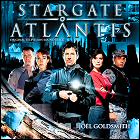 Joel Goldsmith’s soundtrack from the pilot movie of Stargate Atlantis is released on Varese Sarabande Records.
Joel Goldsmith’s soundtrack from the pilot movie of Stargate Atlantis is released on Varese Sarabande Records. ![]()
 ABC airs the 32nd episode of the J.J. Abrams-produced series Lost. Francois Chau guest stars.
ABC airs the 32nd episode of the J.J. Abrams-produced series Lost. Francois Chau guest stars. ![]()
 ABC premieres the ninth episode of Shaun Cassidy’s sci-fi/horror series Invasion, starring William Fichtner (Contact), Eddie Cibrian, and Lisa Sheridan.
ABC premieres the ninth episode of Shaun Cassidy’s sci-fi/horror series Invasion, starring William Fichtner (Contact), Eddie Cibrian, and Lisa Sheridan. ![]()
 Big Finish Productions releases the 76th Doctor Who audio drama in its main monthly range, starring Peter Davison and Mark Strickson.
Big Finish Productions releases the 76th Doctor Who audio drama in its main monthly range, starring Peter Davison and Mark Strickson. ![]()
 Big Finish Productions releases the sixth Sarah Jane Smith audio drama, a Doctor Who audio spinoff starring Elisabeth Sladen, reprising her TV role. Stephen Greif (Blake’s 7) guest stars.
Big Finish Productions releases the sixth Sarah Jane Smith audio drama, a Doctor Who audio spinoff starring Elisabeth Sladen, reprising her TV role. Stephen Greif (Blake’s 7) guest stars. ![]()
 ABC airs the 33rd episode of the J.J. Abrams-produced series Lost. Frederic Lane guest stars.
ABC airs the 33rd episode of the J.J. Abrams-produced series Lost. Frederic Lane guest stars. ![]()
 ABC premieres the tenth episode of Shaun Cassidy’s sci-fi/horror series Invasion, starring William Fichtner (Contact), Eddie Cibrian, and Lisa Sheridan.
ABC premieres the tenth episode of Shaun Cassidy’s sci-fi/horror series Invasion, starring William Fichtner (Contact), Eddie Cibrian, and Lisa Sheridan. ![]()
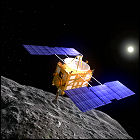 JAXA’s unmanned Hayabusa spacecraft fires its ion engines to depart asteroid 25143 Itokawa, embarking on a five-year trek back to Earth to return surface samples it obtained of the asteroid. Hayabusa has experienced numerous technical glitches, and continues to experience further problems, including a total loss of contact with Earth for several weeks. Only two out of the vehicle’s four ion engines are still functional, and its battery system is only partially reliable, but it is carrying its precious cargo of the first sample material from an asteroid back to Earth.
JAXA’s unmanned Hayabusa spacecraft fires its ion engines to depart asteroid 25143 Itokawa, embarking on a five-year trek back to Earth to return surface samples it obtained of the asteroid. Hayabusa has experienced numerous technical glitches, and continues to experience further problems, including a total loss of contact with Earth for several weeks. Only two out of the vehicle’s four ion engines are still functional, and its battery system is only partially reliable, but it is carrying its precious cargo of the first sample material from an asteroid back to Earth.
 Walt Disney Records releases Harry Gregson-Williams‘ soundtrack from The Chronicles Of Narnia: The Lion, The Witch And The Wardrobe, also featuring songs by Alanis Morissette, Imogen Heap, Lisbeth Scott, and Tim Finn.
Walt Disney Records releases Harry Gregson-Williams‘ soundtrack from The Chronicles Of Narnia: The Lion, The Witch And The Wardrobe, also featuring songs by Alanis Morissette, Imogen Heap, Lisbeth Scott, and Tim Finn. ![]()
 Big Finish Productions releases the third Cyberman audio drama, a Doctor Who audio spinoff.
Big Finish Productions releases the third Cyberman audio drama, a Doctor Who audio spinoff. ![]()
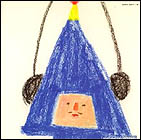 Columbia Japan releases the soundtrack album The Complete Sounds Of Katamari, with selections from (and paying tribute to) the first three Katamari Damacy video games.
Columbia Japan releases the soundtrack album The Complete Sounds Of Katamari, with selections from (and paying tribute to) the first three Katamari Damacy video games. ![]()
 The 712th episode of Doctor Who (the 14th since the series’ revival) airs on BBC1. David Tennant spends much of his first episode portraying an unconscious tenth Doctor, recovering from his regeneration; Penelope Wilton guest stars as Harriet Jones. This is the first episode of Doctor Who intended to be a Christmas special since 1965.
The 712th episode of Doctor Who (the 14th since the series’ revival) airs on BBC1. David Tennant spends much of his first episode portraying an unconscious tenth Doctor, recovering from his regeneration; Penelope Wilton guest stars as Harriet Jones. This is the first episode of Doctor Who intended to be a Christmas special since 1965. ![]()
 Big Finish Productions releases the 77th Doctor Who audio drama in its main monthly range, starring Paul McGann and India Fisher.
Big Finish Productions releases the 77th Doctor Who audio drama in its main monthly range, starring Paul McGann and India Fisher. ![]()
 While the much-talked-about Red Dwarf movie continues to languish in the realm of big-screen vaporware, the BBC lines up its successor. According to a report in the London Times, the new Doctor Who series has put science fiction back on the British broadcasting map, with the BBC’s rivals at ITV preparing a series called Primeval with a multi-million-pound budget and CGI dinosaur effects. In the meantime, the BBC announces a new science fiction comedy for BBC2 called Hyperdrive, which is said to “consciously echo” Red Dwarf, which remains the highest-rated sitcom in BBC2′s history.
While the much-talked-about Red Dwarf movie continues to languish in the realm of big-screen vaporware, the BBC lines up its successor. According to a report in the London Times, the new Doctor Who series has put science fiction back on the British broadcasting map, with the BBC’s rivals at ITV preparing a series called Primeval with a multi-million-pound budget and CGI dinosaur effects. In the meantime, the BBC announces a new science fiction comedy for BBC2 called Hyperdrive, which is said to “consciously echo” Red Dwarf, which remains the highest-rated sitcom in BBC2′s history.
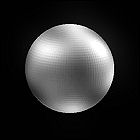 Scientists are already aware that Pluto is really cold, but recent observations suggest that it’s even colder than they had imagined. New radio telescope measurements of Pluto’s surface indicate that it’s a brisk -382 degrees Fahrenheit (scientists had earlier estimated a positively summery -364). Part of the reason for the slight chill in the air – if indeed there was any there – is that Pluto is on the outbound train. The tiny planet’s highly inclined orbit isn’t centered around the sun, while the solar system’s other worlds are more or less centered; part of Pluto’s orbit carries it further away from the sun and “under” the plane shared by the other planets. Curiously enough, however, the surface of Charon – Pluto’s nearly-identical-twin moon – is determined to be warmer than Pluto itself. The readings are taken by the Submillimeter Array in Hawaii by astronomers at the Harvard-Smithsonian Center for Astrophysics.
Scientists are already aware that Pluto is really cold, but recent observations suggest that it’s even colder than they had imagined. New radio telescope measurements of Pluto’s surface indicate that it’s a brisk -382 degrees Fahrenheit (scientists had earlier estimated a positively summery -364). Part of the reason for the slight chill in the air – if indeed there was any there – is that Pluto is on the outbound train. The tiny planet’s highly inclined orbit isn’t centered around the sun, while the solar system’s other worlds are more or less centered; part of Pluto’s orbit carries it further away from the sun and “under” the plane shared by the other planets. Curiously enough, however, the surface of Charon – Pluto’s nearly-identical-twin moon – is determined to be warmer than Pluto itself. The readings are taken by the Submillimeter Array in Hawaii by astronomers at the Harvard-Smithsonian Center for Astrophysics.
 The 184th episode of Stargate SG-1 airs on the Sci-Fi Channel, starring Ben Browder, Amanda Tapping, Christopher Judge, Beau Bridges, and Michael Shanks. Claudia Black (Farscape) and Tony Todd guest star.
The 184th episode of Stargate SG-1 airs on the Sci-Fi Channel, starring Ben Browder, Amanda Tapping, Christopher Judge, Beau Bridges, and Michael Shanks. Claudia Black (Farscape) and Tony Todd guest star. ![]()